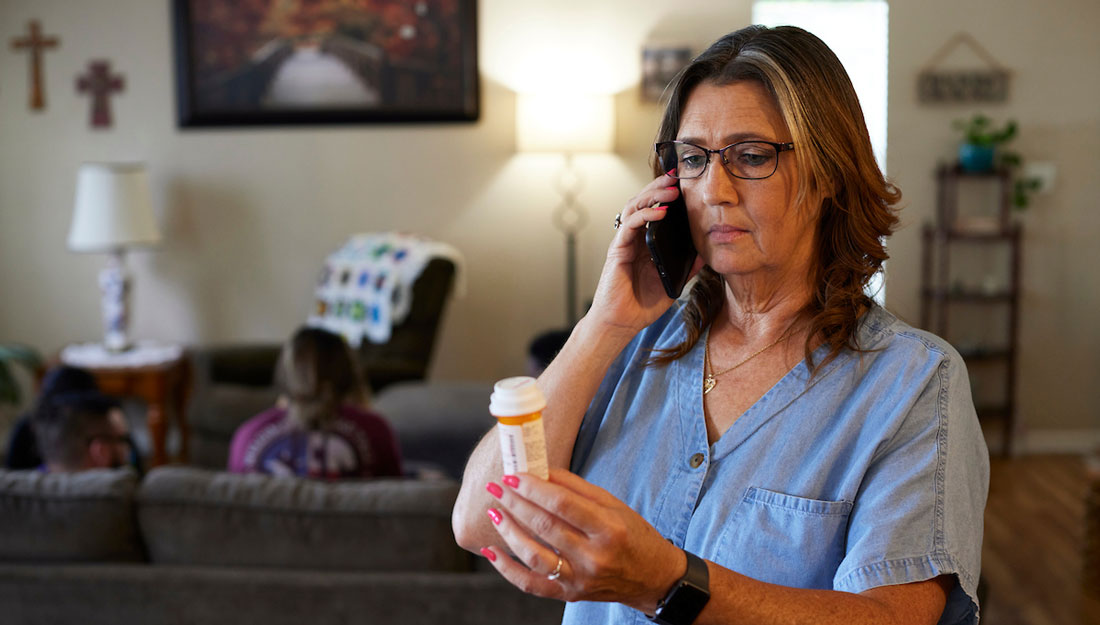- Sunitha Konatham
- Medicine, Research, Show on VR homepage
School of Medicine research contributed to first pill approved for postpartum depression
The oral medication allows new mothers to be treated and recover at home

Unlike the only previous approved treatment for postpartum depression that is delivered intravenously for 60 hours at a health care facility, zuranolone is a single pill that is taken orally for just two weeks. (Adobe Stock)
On Aug. 4, 2023, the United States Food and Drug Administration (FDA) approved zuranolone (Zurzuvae) as the first oral neurosteroid treatment for postpartum depression (PPD) in women. Postpartum depression is a potentially life-threatening condition that occurs after a woman gives birth and can cause new mothers to feel extreme sadness, anxiety, despair and, in extreme cases, thoughts of harming themselves or their children.
Samba Reddy, a Regents Professor of neuroscience and experimental therapeutics at Texas A&M University School of Medicine, is the lead researcher who made groundbreaking contributions to neurosteroid replacement therapy (NRT) research, paving the way for the development of this new medication for postpartum depression.
Neurosteroids are steroids that are produced in the brain and have significant regulatory effects on brain function. “These neurosteroids are released each time we undergo mild stress, and that means that they are ‘stress-busters,’” Reddy said. During pregnancy, one particular neurosteroid, allopregnanolone, is produced in greater quantities. After labor and delivery, neurosteroid levels fall, causing chemical imbalances in the brain that might result in postpartum depression.
Citing the examples of hormone replacement therapy for menopause or insulin replacement therapy for diabetes, Reddy pondered, “Why don’t we replace the allopregnanolone to compensate for the loss of naturally occurring levels to combat these symptoms of PPD?” This question led to the development of intravenous allopregnanolone for the treatment of postpartum depression. This medicine, renamed brexanolone, was approved in 2019 as the first PPD treatment to be administered in certified health facilities. This landmark journey on brexanolone, from concept to clinic, was archived in the journal Psychopharmacology.
“Ten percent of mothers experience PPD, but before NRT-based neurosteroid therapeutics, we didn’t have any medicine that worked rapidly,” Reddy said. “After childbirth, they would have to wait weeks for existing antidepressants—such as fluoxetine or other SSRIs or SNRIs—to take effect, so the neurosteroid therapy is filling this gap.”
The treatment takes effect within just a few hours, which is in stark contrast to the traditional antidepressants that have been historically used to treat postpartum depression, which take three or four weeks.
However, Reddy explained that since the previously approved brexanolone was an intravenous medication, people had to stay at the hospital for three days to get the infusion, and accessibility was limited due to time, financial and social constraints. Zuranolone, an oral allopregnanolone analog, alleviates some of these issues by being administered by mouth in a single 14-day course. This allows new mothers to take the medication and recover in the comfort of their own home rather than staying at the hospital for 60 or more hours to receive an infusion.
Similar to brexanolone, zuranolone replaces the loss of natural neurosteroids and improves the function of the extrasynaptic and synaptic GABA-A receptors, which regulate mood and behavior. This outcome is measured by the improvement of self-reported symptoms on the Hamilton Depression Rating Scale, which is a clinician-administered depression assessment scale that contains 17 different questions pertaining to a person’s experience of various symptoms of depression over the past week.
“I have spent 25 years of my life just researching neurosteroids. My job is to create new knowledge. I have created dozens of new pieces of knowledge, and some remain as ideas, some only become papers, and some turn into clinical products,” Reddy said. With publications going back as far as 1995 with the concept of “Neurosteroids: a new class of neuromodulators,” published in the journal Drugs Today (1995), his research on neurosteroid therapies has gone through all these phases.
The neurosteroid concept Reddy and his collaborators came up with over two decades ago has finally enabled the creation of a new type of product that is accessible to the public as zuranolone.
Throughout his career, Reddy has made stellar contributions to the development of new brain disease therapies, as recognized by the Texas A&M Innovation office, which featured him as the Inventor of the Month in September 2023.
The clinical approval of zuranolone recognizes Reddy’s pioneering research on neurosteroids, the endogenous molecules that regulate neuronal excitability, seizure and mood by rapidly interacting with ionotropic GABA-A receptors on neurons. Now, he will be able to see this medication on the pharmacy shelf because of the fruition of his decades of painstaking work in unravelling the cellular mechanisms behind neurosteroid effects in the brain. This commitment has motivated Reddy to identify therapeutic measures for various neurological conditions, including postpartum depression, epilepsy and brain injury.
The success of Reddy’s pioneering research on the neurosteroids brexanolone and ganaxolone has ushered in a new era of research with the potential to develop new treatments for other neurological and psychiatric conditions. In addition to being a professor and researcher, Reddy is a licensed pharmacist. “One day, I’ll be dispensing this drug that stemmed from my own research,” he said.
Media contact: media@tamu.edu


